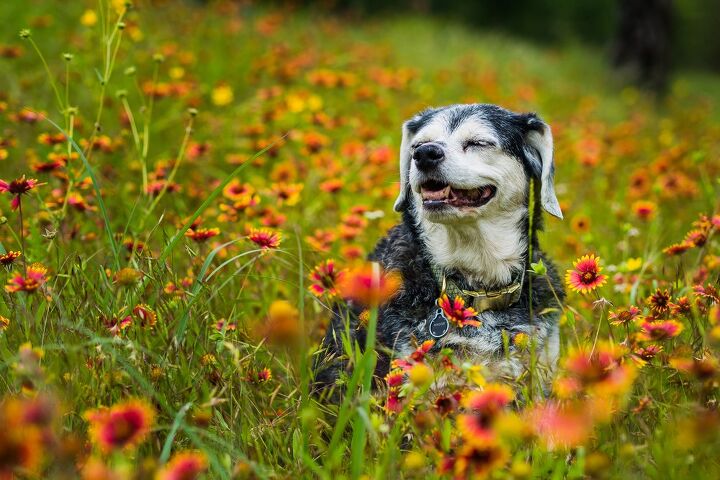6 Golden Tips on Hiking With Your Senior Dog

If you are lucky enough to love an old dog, you know that at this stage of their life, hitting the hiking trails is all about quality, over quantity. A pup who bagged peaks in their prime may still have the heart for it, but their body is looking for an adventure which is a little tamer. Follow these tips to keep your hiking buddy on the trail.
Talk to Your Vet
As our dogs get older, it’s recommended they see their vet at least every six months. This allows you to address any concerns right away. While some canine ailments can’t be entirely prevented, they can be managed and in many cases their severity can be reduced. Speaking with your vet about supplements and diet will go a long way to ensuring that the effects of arthritis are minimized.
Related: Why Hiking Backpacks for Dogs Help Lighten the Load
Set a Different Pace
Your older dog will enjoy hitting the trail at a slower pace than when they were an insane pup. Plan to stop in the shady places for rest. If your old dogs sight isn’t what he used to be, allow some time to stop and sniff. Taking in the smells is enriching for dogs of any age. Your dog might have missed out on this opportunity as a young trail pup, as he was busy running to and fro. Consider sniffing as making up for lost time, all the things he missed when young.
It’s All About Timing
Timing is everything! The older our dogs get; the harder time they have regulating their temperatures. For warm weather adventures, aim to head out earlier in the day, to avoid the hottest part, and allow your dog to remain cool. In cooler weather conditions, aim to adventure during the warmest part of the day. Look for trails which are offer the appropriate shelter, shade for warm days, and wind blocks for colder weather days. With the right planning and the right trail your senior dog will still be able to get his kicks!
Related: What Animals To Watch Out For While Hiking With Your Dogs
Finishing Off
Once the hike is over, your aging dog might need some assistance getting back into the vehicle. Consider buying a pet ramp, most models fold up nicely, and offer some sturdy assistance to get back into the car.
Before your next big adventure, allow your senior dog some time some time to recover before the next outing. Recovering on a well-padded, elevated dog bed feels great and is easier to get up off of.
In between hikes, keep your senior pet moving with multiple daily walks. Frequency is key for mobility. Your senior dog will be wagging his tail on the trail longer, with the right exercise regime. Talk to your veterinarian about daily exercises that will benefit your dog. Keeping the muscles strong, and the weight off, will help reduce the effects of aging.
Rest and Recover
As our beloved dogs age, they will need more time between outings to rest and recover. The amount of time will vary with your dog’s health, condition and the type of activity. Invest in a super awesome raised bed, easy on the joints and easier to get up off of. Just remember, rest days don’t mean no activity at all, just keep it short and easy.
Don’t Leave Him at Home
Your dog is your best friend, and after spending years and years together exploring the trails, it might just break your dog’s heart to leave them at home. Make some modifications and allowances for your dog, after all, your dog spent plenty of time in his youth waiting for you to catch up to him. Now it’s your turn to make a few modifications to be able to continue your adventures together. Because, that’s what best friends do.

Kevin Roberts lives for adventure. Together with his pack of rescue dogs and his husband, he spends as much time outdoors as possible. Kevin lives by the motto: "Get outside and play with your dogs!
More by Kevin Roberts























